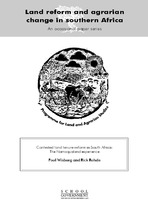| dc.description.abstract | The legacy of apartheid land policy in South Africa remains one of the most conspicuous manifestations of past injustices. To correct this legacy, diverse land reform efforts have centred on the constitutional
mandate for land restitution, redistribution and tenure reform.
The Transformation of Certain Rural Areas Act 94 of 1998 (Trancraa) is the first post-apartheid legislation to be passed and implemented to reform 'communal' land tenure. It aims to transfer state land in 23 former 'coloured rural areas' to residents or accountable local institutions. During 2001 and
2002 civil society organisations, local people, municipalities and the Department of Land Affairs introduced the Act in six areas in Namaqualand of the Northern Cape.
During the same period, a Communal Land Rights Bill for the former 'homelands' has been the subject of consultation, published in August 2002, and adopted in a fundamentally revised version by Cabinet in October 2003 and by Parliament in February 2004. With its reliance on non-elected 'traditional
councils', the Communal Land Rights Bill of 2003 departs in major ways from the policy approach of Trancraa. Trancraa was enacted in the context of the 1997 White Paper on South African Land Policy with its emphasis on individual rights and community choice about ownership and administration of land. The Act emphasised the role of municipalities both in implementation of tenure reform and envisaged future governance.
In spite of dramatic policy changes, the experience of implementing Trancraa in Namaqualand may hold lessons for the implementation of the Communal Land Rights Bill with respect to resources, process, power relations and protection of rights. The Trancraa process represents a small but significant investment by government, but the time, funding and institutional support required to carry out effective tenure reform was seriously underestimated. Furthermore, the Act and implementation process did not address the constitutional right to 'comparable redress', and did not include land development or guarantees of future institutional support. Strengthened tenure rights appear vulnerable if isolated from training, finance and integrated development initiatives. A neo-liberal assumption that 'property rights' and 'markets' by themselves will transform rural areas where people are in deep crisis due to unemployment, HIV/Aids, corruption and food insecurity appears ill-founded and dangerous. | en_US |

